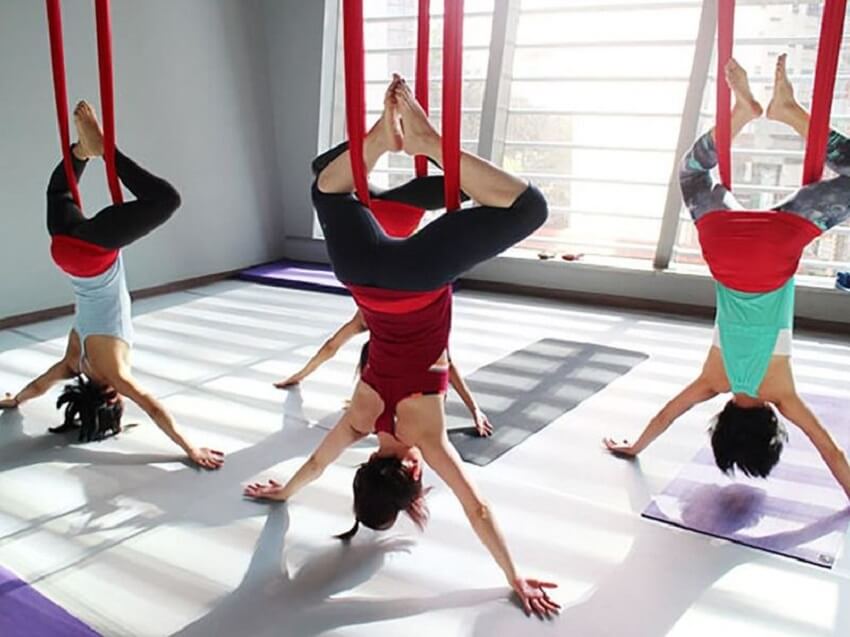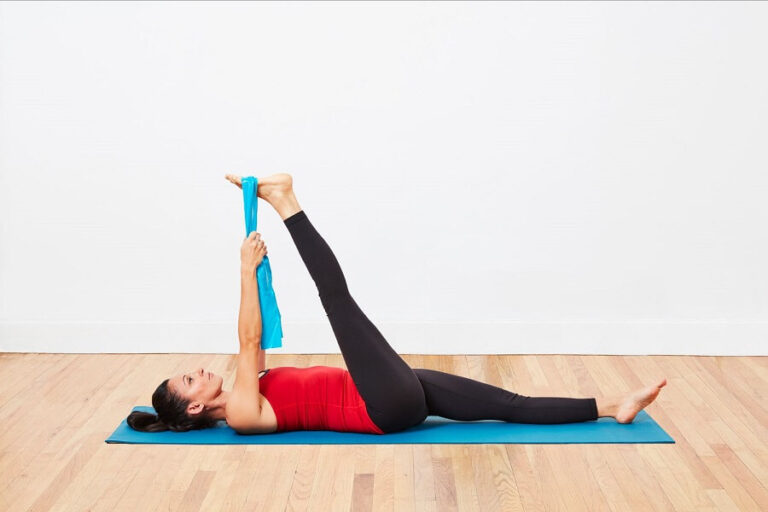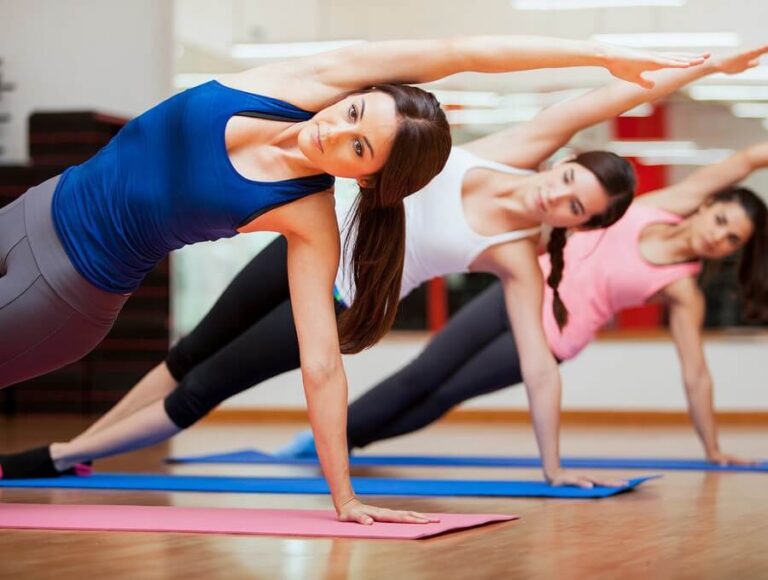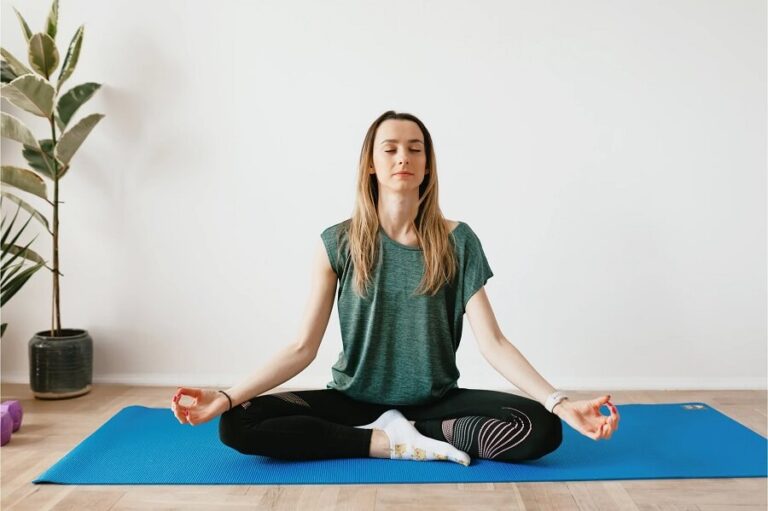Aerial yoga or aerial yoga is one of the types of yoga that is increasingly chosen. The ability to create asanas in the air arouses more and more curiosity among young people and beginners in this discipline.
Although aerial yoga is associated with a large number of benefits, it can have its contraindications. For example, inversions are not recommended in the first months of pregnancy in pregnant women.
This article analyzes the benefits and contraindications of aerial yoga, so you can decide between a yes or a no to start practicing it.
Aerial yoga or aerial yoga, what is it?
Aerial yoga (yoga in suspension or aereoyoga) is a type of yoga that combines traditional yoga and aerial gymnastics with ropes. Aerial yoga has its origin in the twelfth century in Mumbai. (1) It is based on Hatha Yoga, Asthanga, creative yoga and Mallakhamb roe.
In this type of yoga you work with acrobatic figures in the air. Where not only the muscles are strengthened, but also the mind and coordination. Aerial yoga was made popular in 2007 in the US by Christopher Harrison. A professional acrobat and founder of Antigravity Inc., famous for being a participant and director of the openings of the Grammy Awards.
Start aerial yoga – Is it necessary to know traditional yoga?
For those who have been doing traditional yoga for years, getting started with aerial yoga is easier. However, it is not considered a prerequisite when starting. A good instructor will act as a guide so that a beginner feels fulfilled at all times.
As in traditional yoga, there is no one type of yoga class or posture in aerial yoga. However, in the savasana (the final posture of yoga) the participant is wrapped in a cocoon where they work on reaching a higher spiritual state. Where emphasis is placed on meditation and relaxation of the body.
Benefits of aerial yoga
Aerial yoga is one of the types of yoga that incorporates pilates and acrobatics. One of the benefits is that with the ropes or hammocks, a better support of the spine is allowed. It also offers better support in the lower back area.
One of the benefits of aerial yoga is improving muscle strength, flexibility as well as mental state. The benefits of aerial yoga can be summarized as:
1. ALIGN YOUR SPINE AND POSTURE
Due to the effect of antigravity in aerial yoga there is a greater possibility of aligning the spine. In upward facing dog ( urdhva mukha svanasana ) the muscles are aided by the tension of the ropes; allowing greater muscle relaxation.
2. REACTIVATES BLOOD CIRCULATION
In aerial yoga all kinds of postures are achieved that achieve blood circulation in the body; even in the brain. Through the regular practice of aerial yoga, rapid changes can be seen in people with blood flow problems. One of the main benefits of aerial yoga.
3. IMPROVED SELF-PERCEPTION AND MENTAL STRENGTH
4. INCREASED MUSCLE STRENGTH
A particular benefit of aerial yoga is increased strength in the muscles. The need to stay in the air and balance your body is what allows it. Aerial yoga can be difficult at first, especially if you lack arm strength. The good news: with proper guidance and constant work, it is only a matter of time to obtain this benefit.
5. GREATER FLEXIBILITY
With the help of the hammock, in aerial yoga you can get a better relaxation of the body in general. Relaxation is directly related to flexibility. Therefore it can be said that aerial yoga is a good exercise to increase this ability in the body.
6. SUITABLE FOR ALL AGES AND PHYSICAL CONDITIONS
Aerial yoga is suitable for both teenagers and adults. In the different institutions that offer aerial yoga classes, different levels are offered according to each person. The key: make sure there are no more than 10 people per class. To achieve a good technique in yoga, the number of students must be reduced.
7. IMPROVES JOINTS
Aerial yoga is not an impact activity. Therefore this type of yoga is an exercise allowed for people who have joint problems.
8. IMPROVES MOOD, SELF-ESTEEM AND RELIEVE STRESS
In a study from the University of Baltimore, the relationship between yoga and stress has been verified .(3) One of the benefits of aerial yoga is that it reduces the levels of the stress hormone, cortisol .
Aerial yoga contraindications
As in traditional yoga, aerial yoga is suitable for most people. However, it can be said that it has the following contraindications:
- People with high blood pressure or heart problems.
- In cases of otitis, gastritis, sinusitis and conjunctivitis.
- People with acute varicose veins.
- People with cancer and undergoing radiotherapy and chemotherapy treatment. It will be the specialist doctor who will decide whether or not they can practice it
- During the period of menstruation it is not recommended to make investments
- Women in the first 3 months of pregnancy
Aerial yoga is not recommended for pregnant women
Due to the antigravity effect, it can cause problems in the proper development of the fetus. Especially during the first trimester, then with the doctor’s approval some types of inversions are allowed.
Do not practice aerial yoga after eating
If you have just eaten and your stomach is full when performing inversion poses, you probably have digestion problems. Which will make it impossible to concentrate on yoga poses.
Aerial yoga to lose weight?
The firm ropes that hold people in aerial yoga can support up to 900 Kg. So it is not a weight problem to start doing this type of yoga.
However, like any type of yoga, it is not about losing weight , but about achieving the union between body, mind and spirit. Through the breath and the body, this method is an excellent way to work the muscles and reduce anxiety.
Aerial yoga or aerial pilates?
Both Aerial Yoga and Pilates promise to improve the physical and mental state typically disturbed by living in big cities. The constant exposure to situations that generate high levels of stress make this increasingly urgent.
Differences between aerial yoga and pilates
Yoga means union and refers to the union between body, mind and spirit. The word pilates refers to Chronology , or the coordination of mind, body and spirit. Although both focus on the comprehensive training of a person, both have their differences.
The differences between pilates and yoga begin with breathing: in yoga you work with abdominal breathing and in pilates you work on chest breathing.
Another difference is in the focus of the exercise; Pilates is entirely focused on the physical in concentration and precision of the body. While yoga encompasses a philosophical and cultural background behind.
It cannot be said that one is better than the other. The goals are just different. If you are a more practical person and prefer not to delve into philosophy, we recommend you opt for pilates. On the contrary, if you want to delve into the principles of yoga and extend your path in spirituality; yoga is the best option.
Aerial yoga in Spain
In Spain, yoga is around 100,000 followers. The Spaniard Rafael Martínez is the pioneer in aerial yoga. He defining it as a type of yoga where suspension and weightlessness are incorporated in a special swing. Just as he makes an analogy with a platform to encourage creativity, unlocking, muscle definition and rejuvenation.
Martínez, has patented the Aeroyoga® brand. What obliges to pay the corresponding royalties in the case of wanting to implement this technique for teaching or commercial purposes. Something similar to what is currently happening with the CrossFit® brand.
The profile of a person who practices aerial yoga is men and women between 20 and 65 years old. Generally with university studies concerned about their space and well-being and lovers of nature.
One of the benefits of both traditional and aerial yoga is greater mental calm. Due to the concentration on the body and the breath, greater patience and mental strength are achieved.
Where to do aerial yoga?
Currently there are more and more institutions that provide aerial yoga classes. The important thing, before starting aerial yoga, is to find the right teacher. This must inspire confidence and have experience in the field.
To obtain the list of benefits of aerial yoga, it is essential that the number of students is reduced.
RESUME
- Aerial yoga or aerial yoga is a type of physical activity that has numerous health benefits. It allows to improve both coordination, flexibility and muscle strength, as well as the health of the joints, the back and stress reduction.
- Aerial yoga is a relatively new type of yoga. Through the use of a hammock, it allows you to perform traditional postures in the air as well as new postures with the anti-gravity effect.
- The main differences between aerial yoga and aerial pilates are the breathing technique, as well as the inclusion or not of Hindu philosophy as a lifestyle.
- Aerial yoga is not suitable for women in the first 3 months of pregnancy. Nor for people suffering from heart problems, varicose veins and undergoing cancer treatment.
- Aerial yoga is suitable for both beginners and advanced yoga. Although a previous notion of traditional yoga is recommended for a better insertion in the discipline.






